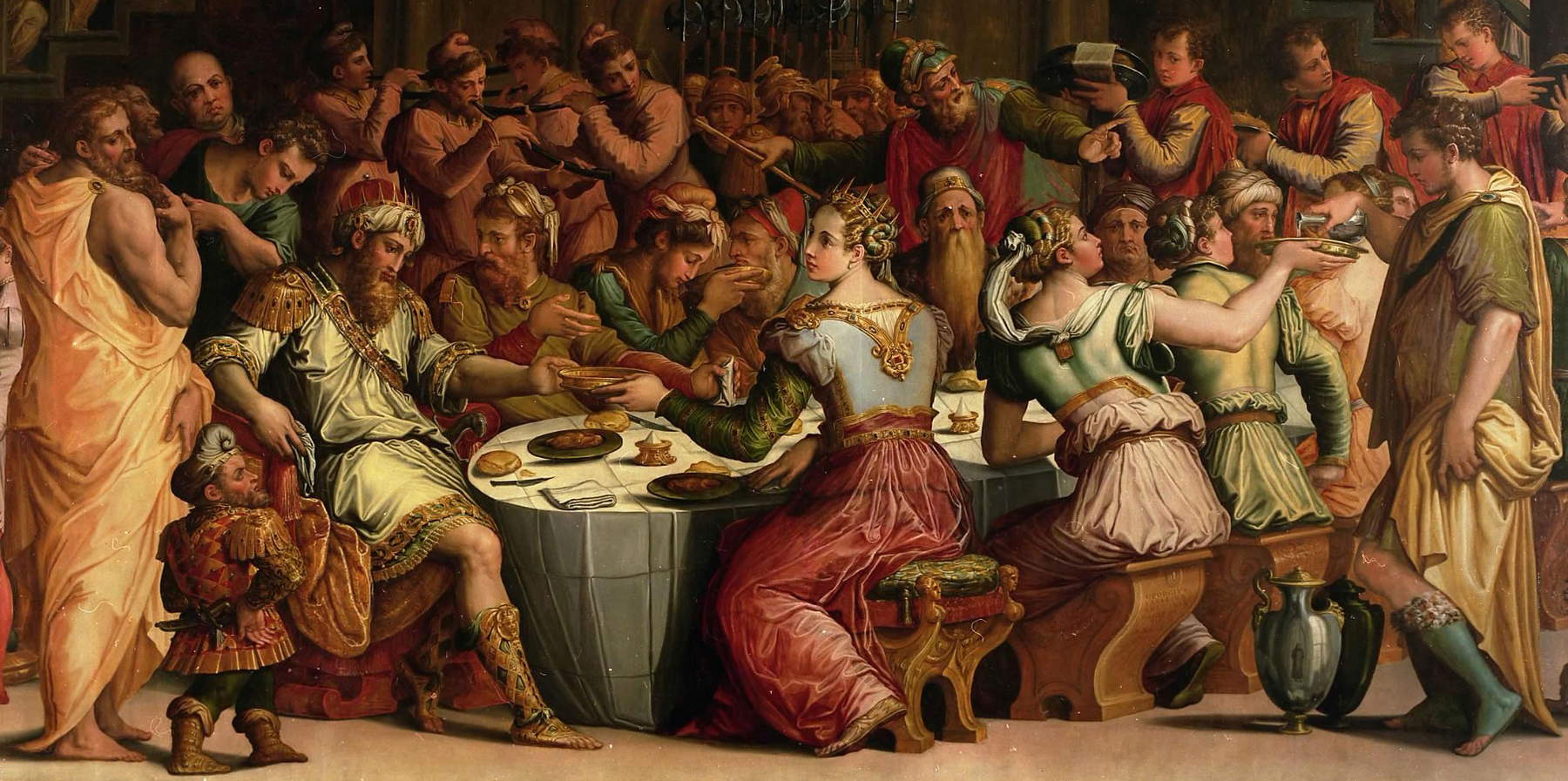From Sept. 21, 2024 to Feb. 2, 2025, the National Museum of Medieval and Modern Art in Arezzo is dedicating an exhibition to a masterpiece by Giorgio Vasari (Arezzo, 1511 - Florence, 1574), “Alcuna cosa fuor dell’uso comune.” Giorgio Vasari’s The Marriage Feast of Esther and Ahasuerus, this is the title of the exhibition curated by Luisa Berretti, revolves around the monumental oil-on-board painting, The Marriage Feast of Esther and Ahasuerus (1548), considered one of Giorgio Vasari’s most important and completely autograph works. The painting, of exceptional dimensions (289x745 cm), was commissioned by Don Giovanni Benedetto da Mantova, abbot of the Monastery of Saints Flora and Lucilla in Arezzo. The event is part of the program “Arezzo. The City of Vasari,” organized to celebrate the 450th anniversary of the Arezzo artist’s death.
Vasari, in his Lives, recounts that he painted the work in just forty-two days, for his “most learned” friend the abbot, asking in return the modest sum of 128 gold scudi, not many for a painting of such dimensions. The artist had just returned to his hometown after being in Rome in 1546 (he had frescoed the main hall of the Palazzo della Cancelleria) and Rimini in 1547. The panel, after having been in the monastery for a long time, was moved to Palazzo Bruni Ciocchi in the 1950s to be part of the new state museum inaugurated in 1958, the arrangement of which was supervised by Luciano Berti.
The painting depicts one of the four banquets narrated in the Book of Esther, where the biblical heroine intercedes with the Persian king Ahasuerus to save the Jewish people, interpreted as a prefiguration of the Virgin Mary. To reinforce this notion, Vasari had also created a fresco above the painting depicting “a Christ handing that queen a crown of flowers,” which has been lost. The banquet, with its allusion to the sacrament of the Eucharist and Christ’s choice of the Ecclesia (the Church), is a work of high religious and symbolic significance. In addition to the painting, the exhibition, which aims to document the genesis of the work, will present preparatory drawings, documents and coeval art objects to explore Vasari’s stylistic and symbolic choices. The exhibition section will also include reflectographs made on the painting in 1993, allowing visitors to discover the hidden details of its making.
Prominent among the materials on display are preparatory sketches illustrating Vasari’s creative process and some contemporary table artifacts to better contextualize the work. The links between this panel and other similar compositions by the artist, all part of Arezzo’s cultural heritage, will also be examined.
“I like to imagine this Vasarian Year as a staircase whose steps lead to the major international exhibition that will crown the timely and in-depth journey toward understanding Giorgio Vasari’s extraordinary and multifaceted artistic personality,” says Arezzo Mayor Alessandro Ghinelli. “This exhibition, dedicated to an exceptionally large work, among the largest created by the master, a timeless masterpiece and precious jewel preserved in the Museum of Medieval and Modern Art, is a privileged testimony to his virtuosity, and is a unique opportunity to learn about its inspiration and genesis.”
“A new and fascinating stage in Vasari’s journey through Arezzo’s state museums,” comments Stefano Casciu, Regional Director National Museums Tuscany, “in anticipation of the exhibition dedicated to the theme of Allegories in the Master’s work, takes us into the heart of the elaboration of such a complex work as the Convito di Ester e Assuero, through the drawings but also the reflectographs made for the 1993 restoration, which revealed the preparatory stages for the direct execution of the panel, an unmistakable sign of an autography that is not always guaranteed in Giorgio Vasari’s works.”
“This is a unique opportunity to be able to admire, in front of the largest panel painting made by Vasari, some of the preparatory drawings and the documents that attest to its execution,” explains curator Luisa Berretti, “in a new lighting that will make the work more visible and enjoyable in all its magnificent details. Accompanying the drawings and documents will be table artifacts of the period from the collections on display and from the Museum’s storerooms.”
The exhibition is part of the rich program of events, exhibitions and celebrations of “Arezzo. The City of Vasari,” which will run until February 2025. The opening is set for Sept. 20 at 5 p.m., with a performance by the Tourdion Vocal Ensemble, which will perform pieces from the 16th century.
For more information: www.vasari450.it
 |
| An exhibition for a huge masterpiece by Giorgio Vasari: the Convite of Esther and Ahasuerus in Arezzo |
Warning: the translation into English of the original Italian article was created using automatic tools. We undertake to review all articles, but we do not guarantee the total absence of inaccuracies in the translation due to the program. You can find the original by clicking on the ITA button. If you find any mistake,please contact us.